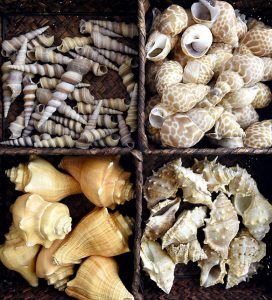
HOUSTON – Museums exist to inspire wonder and facilitate creative thought. Given our curious natures and our innate desire to collect, it is no wonder the grand modern museum has its humble roots firmly planted in the privately-owned collections of extraordinary objects from the past. These collections, called cabinets of curiosity, first became popular in the Renaissance and reached their pinnacle of popularity in the Victorian Era.
These assortments of extraordinary natural and man-made objects were displayed in cabinets with many compartments, each filled with “treasures” reflecting man’s desire to find his place within the larger context of nature and the divine. In time, as the collections evolved and grew in importance, they were acquired by noblemen, gentlemen, and royalty. The collections were then integrated into larger collections eventually becoming so immense, they occupied entire rooms. Many of these pieces were eventually institutionalized and became the first public museums.
As an homage to its own history, the Houston Museum of Natural Science presents an interpretation of the Cabinet of Curiosity opening May 6, containing more than 4,000 objects.
Visitors will have the unique opportunity to peruse various objects of curiosity and wonder, up close and personal.
“Collections were used as a vehicle to showcase the extent of the natural philosopher’s learning and knowledge for others to see and appreciate,” said Kathleein Havens, Director of Curriculum and Content at HMNS. “The impulse to share these collected wonders with others gave birth to this movement and ultimately to the museums as we now understand them.”
While the presentation of artifacts and specimens in modern museums is well thought out and even methodical, objects in the cabinet of curiosity were displayed with no particular care given to order or theme. One may have found an articulated monkey skeleton displayed next to a collection of medical oddities or exquisite paintings paired with a collection of taxidermied animals. The seemingly random blending of the natural and the man-made, with no account given to time or place, enabled the viewer to experience the world holistically, in all of its intrinsic wonder.
However, there was method to the seeming madness. What appeared haphazard to the untrained eye was built upon the idea that all things, whether man-made or natural, were connected to each other through visible or invisible likenesses. Only careful observation and study could reveal these connections and would then bring an understanding of the workings of the world and how humanity fit into the larger picture.
Collections were also intended to showcase the depth and breadth of the collector’s intellect and education. Any serious cabinet included objects from three important categories: naturalia, artefacta and scientifica. Naturalia were objects collected from nature, artefacta those created by man, and those categorized as scientifica illustrated man’s dominance over nature. These categorical collections closely mirror those typically found in modern natural science museums and their associated collections.
Highlights of our collection include: two drawers of rare Asian pheasant study skins, and the rostra (noses) of sawfish. The pheasants are extremely rare in nature and the young male Edward’s pheasant (smallest of the four) is in all likelihood extinct in nature. What agent orange didn’t do to their populations during the Vietnam War, hungry forest-dwellers pretty much finished off.
The sawfish rostra are sad remnants of two generations ago. Sawfish were once abundant along western Atlantic from New York to Brazil and in the Gulf of Mexico but are now listed as critically endangered due to net trawling and nursery habitat loss. The only place in the U.S. they can still be found is waters adjacent to Everglades National Park in southern Florida because it is illegal to trawl waters that are part of the National Park ecosystem.
Get a glimpse of a Cuvier’s beaked whale, which is found in oceans throughout the world. This particular specimen from the Gulf of Mexico was articulated by the museum’s late Director, Dr. Thomas Pulley. Then there’s the red-tailed hawk. They are the most common hawk in rural areas on the outskirts of Houston and one of the most common species in certain parts of the city, often sitting on roadside fences or telephone poles.
Prepare to be amazed by a sarus crane standing nearly six feet tall. This specimen is not only the largest of the 15 species of cranes, but also the tallest flying bird! Marvel at a brow-antlered and fallow deer. Brow-antlered deer are found throughout southeast Asia. Despite their wide range, they are considered endangered due primarily to habitat destruction and non-sustainable hunting. There are perhaps fewer than 3,000 remaining today, with an additional 1,300 in zoos and captivity.The fallow deer is a medium-sized deer, native to the Mediterranean, but are also one of the most abundant exotic game species on private ranches in Texas.
Other treasures on display: A Nile crocodile – a “man-eater” – donated by a local Houstonian; a giant Tridachna clam shell; a leatherback sea turtle; an American Alligator and much more.
Admission to Cabinet of Curiosities is included with entrance to the permanent exhibit halls. For tickets or more information, visit www.hmns.org or call (713) 639-4629.
